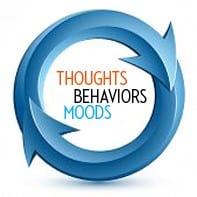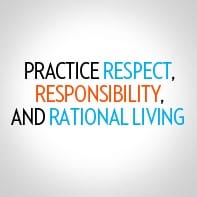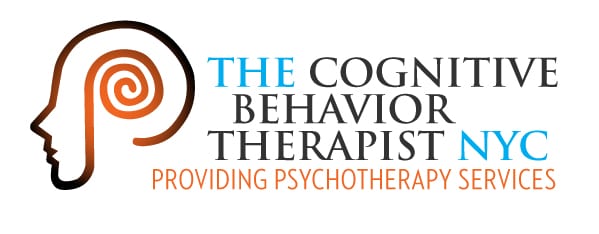My last article posted on decision making, “Are you suffering from ‘decision-making strategy neglect’? Maximizer vs. Satisficer”, focused on Stage 1, the information gathering phase. Now let’s focus on Stage two, the solution focus stage, where a solution is decided upon and then implemented.
More often than not, I see people experiencing mild to intense anxiety during this stage. This can result in a “non-decision”, where the idea of selecting a decision and staying with the decision long enough to implement is too anxiety provoking so nothing gets determined nor implemented in the appropriate manner.
This is anxiety can be driven by a number of reason but a common phenomenon observed is the concept of searching for “THE RIGHT decision” rather than the “the best solution” or “a good decision”. For those who are in search of the “THE RIGHT decision” they are often foolishly led by perfectionist ideals characterized by a desire to not just to maximize their resources, but by the belief that they must make one decision that satisfies their needs 100%. However, as our lives develop and become more complex, it becomes increasingly difficult to make decisions that satisfy all elements involved. Failure to grasp and accept this concept, often leads to internal conflict, dissonance and arousal; triggering the desire to renegotiate the decision process, perpetuating the cycle.
What to do:
Developing insight into your own style, as well as the styles of others, can help you determine which style works best for you and/or your organization and under what set of circumstances.
Like the information gathering phase, there are a number of different strategies that occur during the solution focus phase. We also vary in the number of potential solutions we simultaneously generate and consider.
A uni-focus style is denoted when the information collected is used to assemble one potential solution and follow one course of action in the implementation. Whereas, as multi-focused style includes developing alternative solutions.
Decision making research describes 5 basic decision making styles that consider whether the person is behaving as a maximizer vs. satisficer in combination with uni-focus or multi-focused style:
1. A Decisive style is a satisficing & unifocus style. These people pride themselves on making fast and efficient decision. They choose a course of action and implement it in the most expedited manner, ignoring any desire to reevaluate due to an uncertain future. The down side is that these people are often perceived as inflexible and short sighted. This approach is however seen often with politicians and business-men.
2. A Flexible style is a satisficing, multi-focus style. These people move fast, but are willing to drop one tactic in favor of another at any moment. Flexible decision makers do well in organizations or situations where there is a lot of quick change but can fall into a dangerous pitfall of being too flexible. Too flexible involves the willingness or desire to drop present decisions for new strategies before it’s necessary or because your priorities have changed, rather than the components of the situation itself. Thus they end up trying to be maximizers with the resources and intent of a satisficer.
3. The Hierarchical decision maker is maximizing & unifocus style. They use ample resources to identify the best solution and then work out a detailed and specific plan of action. Implementing this style without seeming too over controlling or rigid requires a lot of self-awareness and patience.
4. The Integrative style involves maximizing and a multi-focus style. Where more than one course of action is developed based on a lot of information. These people often pursue several course of action simultaneously; hence it requires ample resources during both stages. These people value creativity and diverse set of ideas and often work well groups.
5. The Systemic style combines characteristics of the hierarchic and integrative styles. Information is gathered in a maximizer way, but at times the solutions are uni-focused whereas at other times multi-focused. This person will produce multiple detailed solutions, with long terms goals but focus on applying plans that pertain to the near future.
The decisive and flexible styles tend to work best when things need to be done quickly and when the issues to be considered are relatively simple. The hierarchical, integrative, and systemic styles are best when applied to more complex matter that requires long term strategy, and considerable resource investment.
The most important thing to realize here is that no decision making strategy is ideal in all situation, the BEST strategy is to evaluate your circumstances (including your style, how those around you operate and the resources and parameters of the situational), then decide which strategy you will implement to make your decision.
Best Dr.Jayme 🙂
Please address all follow up comments and questions to the blog: www.AsktheCBT.com
Thank you.

















DrJayme,
Excellent post:
““THE RIGHT decision” rather than the “the best solution” or “a good decision”. For those who are in search of the “THE RIGHT decision” they are often foolishly led by perfectionist ideals characterized by a desire to not just to maximize their resources, but by the belief that they must make one decision that satisfies their needs 100%.”
What psychological situation, do you think leads someone to think like this? It almost appears like the person is looking for the home run, and unable to hit singles or doubles.
Things like grandiosity come to mind, and of course perfectionism. What leads up to that, if so, in your opinion?
John Allen Mollenhauer
DrJayme,
Excellent post:
““THE RIGHT decision” rather than the “the best solution” or “a good decision”. For those who are in search of the “THE RIGHT decision” they are often foolishly led by perfectionist ideals characterized by a desire to not just to maximize their resources, but by the belief that they must make one decision that satisfies their needs 100%.”
What psychological situation, do you think leads someone to think like this? It almost appears like the person is looking for the home run, and unable to hit singles or doubles.
Things like grandiosity come to mind, and of course perfectionism. What leads up to that, if so, in your opinion?
John Allen Mollenhauer
This was a really great read, I am very glad I came across your site.
This was a really great read, I am very glad I came across your site.
Good to see that people still know what they are talking about. So much BS around these days!
Good to see that people still know what they are talking about. So much BS around these days!
Thank you both. Sometimes I don’t see all that I am really ailompcishcng because of the anxiety it creates. And, don’t get me wrong, there are some things I might face, but still do a compulsion afterward like washing or cleaning, but there are other times I don’t or I delay or I do it only once. I am told all of that is progress and I hope very soon, I am able to accomplish all these things with no compulsions whatsoever and no anxiety at all.
Thank you both. Sometimes I don’t see all that I am really ailompcishcng because of the anxiety it creates. And, don’t get me wrong, there are some things I might face, but still do a compulsion afterward like washing or cleaning, but there are other times I don’t or I delay or I do it only once. I am told all of that is progress and I hope very soon, I am able to accomplish all these things with no compulsions whatsoever and no anxiety at all.